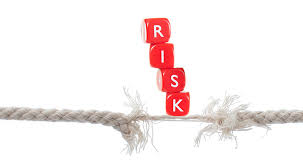Third Party Risk Management
 There is something in a name. More people in the compliance industry, when referring to third-party due diligence, are labeling it “Third Party Risk Management.” I like it because it is more accurate.
There is something in a name. More people in the compliance industry, when referring to third-party due diligence, are labeling it “Third Party Risk Management.” I like it because it is more accurate.
Due diligence screening of existing or new third parties is just an initial step – it is not an end unto itself. Assuming that the third-party passes the due diligence review, there are a number of continuing obligations needed to manage risk.
Given the level of risk, additional measures may have been imposed to reduce such risk such as increased training, certification, audit or other requirements. The list of possibilities is endless (to a certain extent). All of these measures are meant to “manage” the risk and bring it to an acceptable level for the company.
More importantly, third-party risk management is an accurate term to communicate the need to monitor and audit third-party activities. It is all well and good to secure audit rights in a written contract with a third party, but the company has to make sure it executes some audits, otherwise the provision and intent behind it may be suspect.
Assuming that a company is committed to the broader concept of “Third Party Risk Management,” the interesting issues being faced by companies are how to monitor third parties and how to audit their activities. Relying on technology, companies like to explain that their screening software programs retain search information and immediately notify the company (by email usually) that an individual’s or entity’s status has changed with a new notation of some risk (e.g. corruption, money laundering). That is one part of a monitoring program but it is far from sufficient.
Monitoring connotes some active means by which a company expends resources to observe, measure and/or verify a third-party’s actions. The decision who to monitor and how often can boil down to continuous risk ranking, or some measure of third party activity. A quarterly risk ranking procedure may identify candidates for follow-up monitoring.
Once identified, the company can develop tiers for follow-up monitoring activity based on the assigned level of risk. For example, for higher risk third parties, the company may inquire as to why certain risk factors have increased and/or conduct a desk audit of the third-party in order to confirm compliance activities by the third-party (e.g. legally in good standing, number of training sessions, sales interactions with government officials, and nature of gifts, meals, entertainment expenditures with specific government individuals). For lower risk candidates, the company may conduct a less intensive desk audit or follow-up questions on a specific issue such as training.
Depending on the complement of risks, and responses to various questions, the company can impose additional training and/or certification requirements, increase compliance reminders and notices, or even initiate transaction testing on a quarterly basis.  If the concern grows even greater, the company can conduct on an on-premises compliance and/or financial audit with the assistance of the Internal Auditor.
If the concern grows even greater, the company can conduct on an on-premises compliance and/or financial audit with the assistance of the Internal Auditor.
Whatever approach is taken, a company has to adopt a set of procedures and rules for monitoring and risk management, and apply those rules in a consistent manner. The company cannot shy away from its rules when the third-party is high-risk but also producing high revenues. That is just a cop-out and will undermine the entire risk management program.
Compliance depends on consistency and predictability. These two concepts go hand-in-hand. Third party risk management requires creativity, careful resource allocation, and above all – consistent application of rules and procedures.














